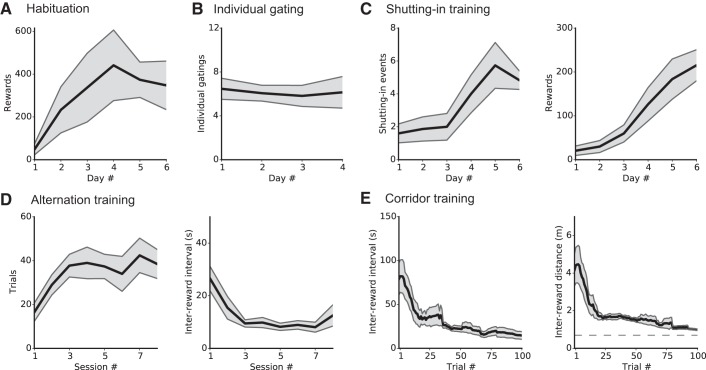Fig. 4.
Duration of pretraining phases. A–E: different functions of the Servoball home-cage system are successively activated. A: habituation of group-living rats to entering the Servoball VR arena and using the liquid feeders. Initially, all ID-sorter gates are open and the cylinder is permanently raised, giving all animals simultaneous access to the eight activated liquid reward feeders. Data show the number of rewards collected per individual during 24 h during the 6-day habituation phase. B: learning individual admission to the Servoball arena. After the ID-sorter function is activated, only single animals can access the Servoball arena from the home cage. Data show the number of passages through the ID-sorter and to the Servoball per individual and per 24-h period during the four days of this phase. C: habituation to becoming enclosed by the cylinder before receiving rewards. In this phase, feeders only become active after the cylinder has been lowered to shut in the rat. The cylinder moves downwards when the rat is in the center of the sphere. Left: individual shutting-in events; right: individual rewards per 24 h. D: alternation training. This training occurred within the stationary 49-cm Servoball arena without compensation. Data show successful individual trials per 10-min session (left) and time intervals between rewards (right). E: treadmill training with locomotion compensation activated. Alternation between the 2 ends of a corridor. Lines to the left and right show moving averages from 15 trials, and the gray area shows SE; n = 15 for A, B, and C; n = 8 for D and E. For calculation of the minimum distance in E, see the appendix.

